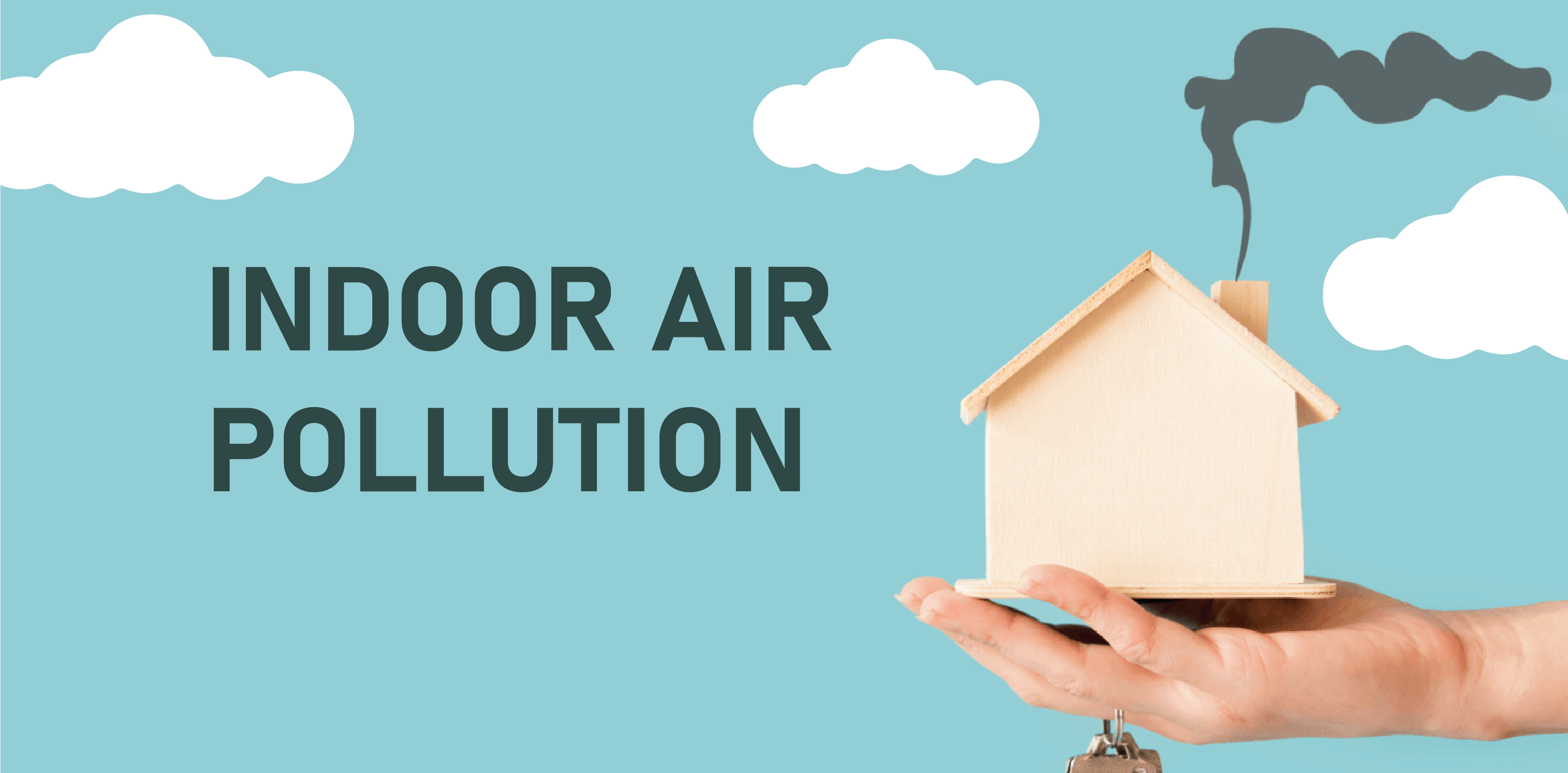Indoor Air Pollution

Indoor air pollution refers to contamination of air within a building/home. Most modern day properties suffer from indoor air pollution to some degree. The quality of your indoor air is a barometer of how the air in your premise affects the health and comfort of its occupant.
Indoor air pollution has become a more pressing concern in recent years due to the construction of more energy-efficient homes. These properties tend to be relatively airtight with less natural openness, meaning that the air inside can quickly become stagnant and pollutant levels rapidly rise.
In traditional set ups the burning of fuels,gas for cooking can produce a large number of toxic chemicals. Without effective ventilation, these chemicals are inhaled and can cause serious health damages.
The most common symptoms of indoor air pollution are:
Headaches
Blocked sinuses or a runny nose
Skin rashes
Itchy eyes
Drowsiness
Difficulty in breathing
These symptoms are common for various other ailments but if they continue to remain or get worst, you must visit a Pulmonologist and get yourself checked.
While anyone can be affected by indoor air pollution it is riskierfor people living with a lung condition, such as COPD, asthma, or bronchiectasis. They are more likely to be affected by poor air quality due to sensitive lungs although not everyone has the same reactions to the dust, dirt and gases in their homes.
If you have a severe lung condition you might find it harder to move around, so may spend more time indoors. This means you may have more contact with things that affect the air you breathe indoors. These could include cigarette smoke, cleaning products or mould.
Young children are particularly vulnerable to poor air quality as their lungs are still growing and developing.Children’s airways are smaller, so inflammation caused by indoor and outdoor air pollution can cause them to narrow more easily than in older people.
There are various contributors to indoor air pollution. Some we may identify due to their odour but some are not so easy to detect.
Mold
Mold is a form of fungus which grows from spores that latch onto damp areas in buildings. It breeds in moist environments and is common in winter and in humid climates.
Tobacco Smoke
Active or passive smoking are major contributors to indoor air pollution. This kind of tobacco smoke inhalation is particularly harmful for childrenincreasing the risk of sudden infant death syndrome (SIDS), severe asthma, ear problems, and acute respiratory infections.
When inhaled, these chemicals can cause illnesses such as chronic obstructive pulmonary disease (COPD) and other cardiovascular diseases which lead to heart attacks, as well as other serious complications in adults.
Carpets
Carpets trap indoor pollutants which settle on their surface.The pollutants caught in the carpet can be easily disturbed simply by walking on them.Particulates from smoke, allergens, and other harmful substances rest easily on them. Research has found that even some toxic gases can settle into carpets.
Household Products
Everyday products at home can cause indoor air pollution. These include cleaning agents and disinfectants,paints,glues and solvents,personal care products,air fresheners and candles.
These products may emit compounds which can cause issues such as eye, nose or throat irritation, headaches, nausea, organ damage, and even cancer in some extreme cases.
Appliances
Many homes and offices contain space heaters, ovens, furnaces, fireplaces and water heaters that burn fuels such as gas, kerosene, oil, coal or wood for energy. Modern day equipments are tried and tested thoroughly for safety hazards but if the appliance is faulty, it can produce toxic gases and hazardous aldehydes.
Pet Dander
Pet dander is comprised of microscopic flakes of skin shed by household pets causing symptoms like coughing, sneezing, watery eyes, and chest tightness for allergy sufferers.
There are simple ways to improve indoor air quality.Heating, ventilation, and air conditioning filters, HVAC filters purify the air that enters and exits the various units located throughout your property .Vacuuming is extremely important to improve indoor air quality, especially if you have carpets and pets. It is recommended that you vacuum at least 3 times a week in order to keep dust levels low.Indoor plants are an excellent way to help control air pollution and mitigate its effects. Keeping spaces clean and decluttered helps in keeping dirt at bay.
Simple alterations in your lifestyles may protect you from adverse indoor air pollution issues.
Open windows or doors to let fresh air in
Reduce the thermostat to about 66°F
Try taking more regular breaks from your desk
Where possible take in some fresh air by walking outside
We cannot escape the reality of indoor and outdoor air pollution but can definitely try and control it with healthy alternatives.
 Call For Appointment
Call For Appointment